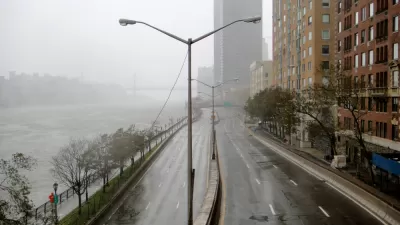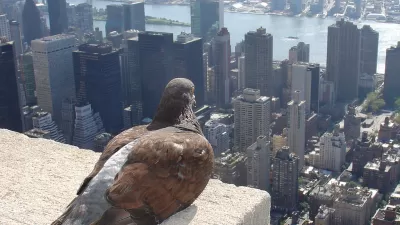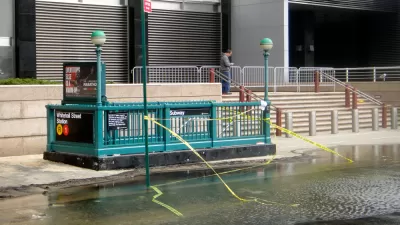The city of New York has a new mandate for resilience planning.

The New York City Council responded to the havoc wreaked by Hurricane Ida by requiring the city to make a comprehensive plan for climate resilience.
The City Council's vote will "step up pressure" on the city's government to honor promises made after Superstorm Sandy that failed to protect the city from the ravages of a storm that made landfall on the Gulf Coast in an around New Orleans, according to an article by Anne Barnard.
As noted by Barnard, the new legislation shifts the focus of previous resilience planning programs on Lower Manhattan to prioritize resilience at the neighborhood level: "The legislation also seeks to remedy years of concerns that slow-moving plans to protect Lower Manhattan’s Financial District have eclipsed equally urgent needs in working-class neighborhoods, like those in Queens and Brooklyn where people died in last month’s flash floods caused by remnants of Hurricane Ida."
"The Big U" plan approved after Sandy would have built a 10-mile U-shaped barrier from 57th Street on the west side, down the battery and up the east side to 42nd Street, according to an article picked up by Planetizen in October 2017, but quickly ran out of momentum.
Since then, the city did draft and approve a zoning rewrite to build more resilience measures into the built environment along the city's 520 miles of coastline.
The source article linked below includes numerous soundbites from local experts and advocates discussing the benefits and shortcomings of the new bill.
FULL STORY: Ida Flooding Deaths Push Council to Demand Climate Change Plan for New York

Study: Maui’s Plan to Convert Vacation Rentals to Long-Term Housing Could Cause Nearly $1 Billion Economic Loss
The plan would reduce visitor accommodation by 25,% resulting in 1,900 jobs lost.

North Texas Transit Leaders Tout Benefits of TOD for Growing Region
At a summit focused on transit-oriented development, policymakers discussed how North Texas’ expanded light rail system can serve as a tool for economic growth.

Why Should We Subsidize Public Transportation?
Many public transit agencies face financial stress due to rising costs, declining fare revenue, and declining subsidies. Transit advocates must provide a strong business case for increasing public transit funding.

How Community Science Connects People, Parks, and Biodiversity
Community science engages people of all backgrounds in documenting local biodiversity, strengthening connections to nature, and contributing to global efforts like the City Nature Challenge to build a more inclusive and resilient future.

Alabama: Trump Terminates Settlements for Black Communities Harmed By Raw Sewage
Trump deemed the landmark civil rights agreement “illegal DEI and environmental justice policy.”

Dear Tesla Driver: “It’s not You, It’s Him.”
Amidst a booming bumper sticker industry, one writer offers solace to those asking, “Does this car make me look fascist?”
Urban Design for Planners 1: Software Tools
This six-course series explores essential urban design concepts using open source software and equips planners with the tools they need to participate fully in the urban design process.
Planning for Universal Design
Learn the tools for implementing Universal Design in planning regulations.
City of Santa Clarita
Ascent Environmental
Institute for Housing and Urban Development Studies (IHS)
City of Grandview
Harvard GSD Executive Education
Toledo-Lucas County Plan Commissions
Salt Lake City
NYU Wagner Graduate School of Public Service





























